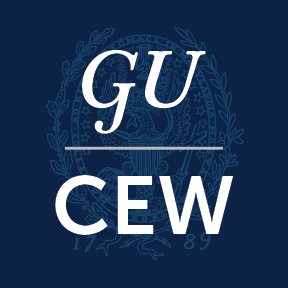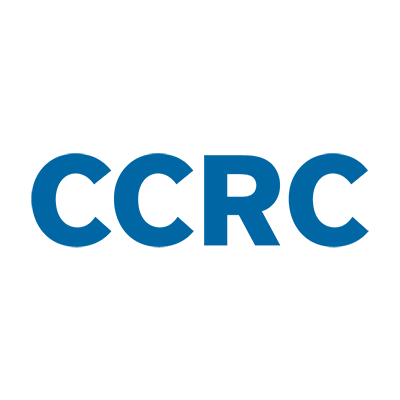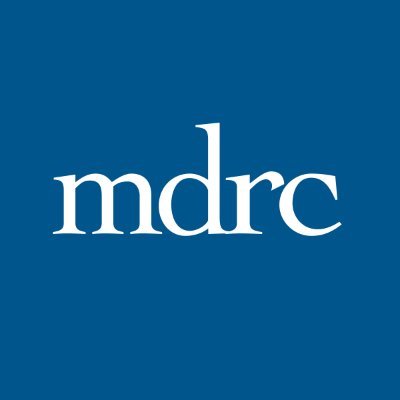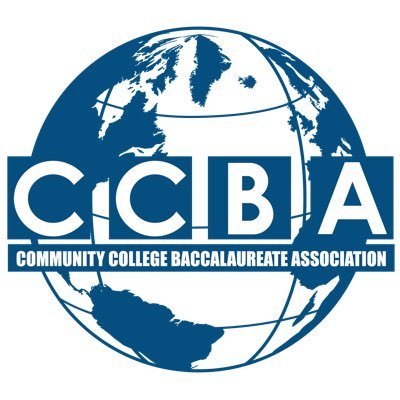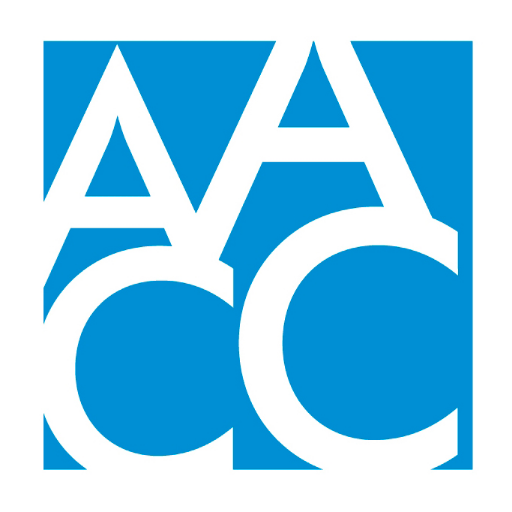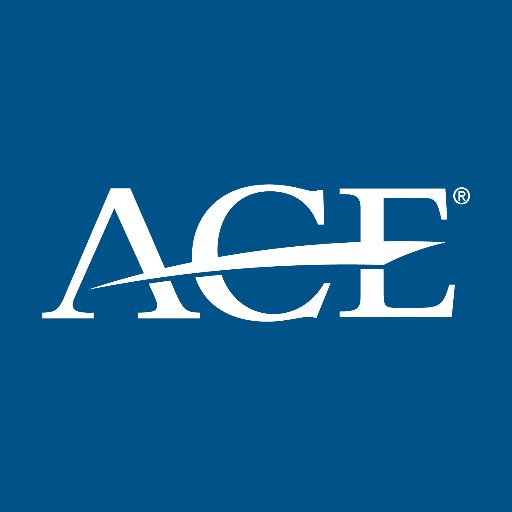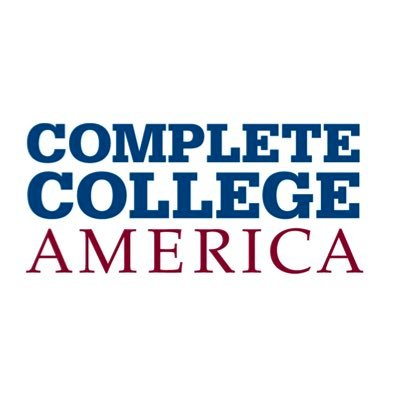Georgetown CEW @GeorgetownCEW
The Georgetown University Center on Education and the Workforce (CEW) is a research and policy institute within Georgetown’s McCourt School of Public Policy. cew.georgetown.edu Washington, DC Joined May 2010-
Tweets20K
-
Followers10K
-
Following3K
-
Likes16K
The growing relationship between #postsecondary education and the #workforce requires deeper focus on career outcomes in the US. The journey from college to gainful employment is not a smooth ride. Read our 10 rules to help students navigate the journey: bit.ly/3pTk2jn
The rising costs of college emphasize the importance of assessing the ROI of a degree when deciding which to attend. While elite schools boast some of the highest returns, certain lower-ranked colleges offer even greater ROI’s. @PaulinaCachero @business bloomberg.com/news/newslette…
“Navigating the College-to-Career Pathway: The 10 Rules of Moving from Youth Dependency to Adult Economic Independence,” a research paper published with the Postsecondary Value Commission, shares considerations for students as they prepare for college: bit.ly/3pTk2jn
While college can be risky and tricky to navigate, more education is still generally a good bet. Why? With each level of educational attainment, workers tend to have higher median earnings. bit.ly/3pTk2jn
While Ivy League schools often boast high ROI, a CEW report indicates that certain lesser-known colleges with STEM-focused programs offer comparable or even higher ROI. @PaulinaCachero @franmagliones @business bloomberg.com/news/articles/…
When faced with poor job prospects due to a recession, go to school. A first job can influence the entire course of your career, and entering the labor market during a recession can hinder advancement along an optimal career trajectory. bit.ly/3pTk2jn
Earnings within majors range widely. The top 25% of bachelor’s degree holders who majored in the humanities and liberal arts earn more than the bottom 25% of those who majored in architecture and engineering. bit.ly/3pTk2jn
Happy Administrative Professionals Day! Today, we recognize and appreciate administrative professionals for their contributions and support to the operations of organizations.
Today is #WorldBookDay! Let's celebrate the joy of reading and the power of learning. In a world where knowledge is key, let's keep turning the pages and unlocking new insights together.
Education should be designed to yield skills that are valued across the workplace—specifically, communication, teamwork, sales and customer service, leadership, and problem solving and complex thinking. bit.ly/3pTk2jn
“It’s not an equitable system when we rely on [community college] students to come in with knowledge of this hidden curriculum on how to transfer instead of holding institutions responsible for creating clear pathways and adequate advising along the way.” the74million.org/article/new-da…
Enhancing counseling and other student services could make all the difference in providing students with a clearer roadmap from school to economic independence. Read the rest of our recommendations for administrators and policymakers: bit.ly/3pTk2jn
Happy Earth Day! Let's unite to honor our planet and commit to actions that protect and preserve it for future generations.
In an all-one-system approach, preschools, elementary and secondary schools, community colleges, four-year universities, employers, & governments would follow an integrated playbook, helping smooth young people’s progress from pre-K–12 to college and work. bit.ly/3Eb6Muy
Demand for workers with more education and experience means more demand for older workers and less demand for younger ones. As a result, the earnings of younger workers have barely improved since 1980, while the earnings of older workers have grown by 35%. bit.ly/3Eb6Muy
To get the most out of your postsecondary education, choose carefully when selecting a major. Earnings can vary significantly depending on your choice. bit.ly/3pTk2jn
It used to be possible to work one’s way through college; today, college costs are generally too high—and young people’s wages too low—for that to be feasible. Consequently, more students have to take on larger amounts of debt to get a college degree. bit.ly/3Eb6Muy
#Youthpolicy in the US is a vast patchwork quilt of programs and initiatives. It is fragmented across multiple silos, and while there are programs focused on the intersection of education and work, they are not sufficient to bridge the gaps. bit.ly/3Eb6Muy
All told, workers with less than a bachelor’s degree hold 65% of all good jobs in rural areas. Workers with the same level of educational attainment hold only 44% of the good jobs in urban America. bit.ly/3SJZIxI
While all students could benefit from systemic reforms, #firstgen students, #lowincome students, young people in the foster care system, and young people who face homelessness or who have been involved with the juvenile justice system would gain the most. bit.ly/3Eb6Muy

Eric Hoover @erichoov
20K Followers 1K Following College access, admissions, inequality in education. Senior writer @chronicle. Believer in baseball, underdogs, long narratives. [email protected]
Sara Goldrick-Rab @saragoldrickrab
47K Followers 24K Following AUTHOR of Paying the Price 📚 FOUNDER of #RealCollege @hope4college @believestudents 💡ADJUNCT @ccpedu ✏️✏️SENIOR FELLOW @educationnw 🔬MOM of teens 🌱🐶🐈🐈⬛
Jon Boeckenstedt de l.. @JonBoeckenstedt
19K Followers 1K Following Please read link below before following. Fan of German Lagers & college access. Called an unpleasant character by some. This is a personal account.
Michael Sorrell @michaelsorrell
14K Followers 3K Following Prez of @paulquinn1872. WE over Me + Four Ls of Quinnite Leadership #NationBuilding, New Urban College Model, & Reality Based Education. #stilljustwarmingup
CJ Nellum @chrisnellum
14K Followers 10K Following fairness first | exec dir @edtrustwest | my views ≠ my employer | #caedu #cahighered #caleg #cabudget #edequity
Dr. Karen Stout @drkastout
9K Followers 4K Following President & CEO @AchieveTheDream powering #comm_colleges to improve equitable outcomes for 4 million students in 45 states. President Emerita @mccc (she/her)
Dan Collier, Ph.D. @Dcollier74
5K Followers 5K Following HE Policy: #1stGen, #Pell, #TuitionFree, #IDR, #PSLF, Assoc Editor: @JSFAtweets, Assistant Prof of Higher Ed.
Kevin R. McClure @kevinrmcclure
10K Followers 2K Following Assoc Prof of Higher Ed | Co-Director @ARRC_Research | Contributor @EdSurge @Chronicle | Writing and Speaking on How to Build a More Caring University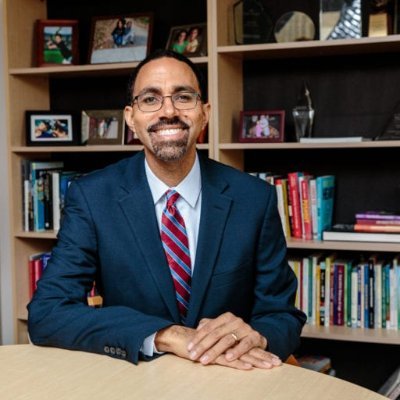
Dr. John B. King, Jr. @JohnBKing
45K Followers 2K Following @SUNY Chancellor. Former Education Secretary for @barackobama, teacher, principal, @EdTrust CEO, & @UofMaryland prof. Afro-Latino 🇵🇷 Official: @SUNYChancellor
Travis Reindl 🏳️.. @treindl71
2K Followers 2K Following Washingtonian, South Dakota native. #LGBTQIA, retired runner, comms/policy pro, news junkie, proud Presbyterian. Fueled by caffeine. Snark my own.
Sophia Laderman, Ph.D.. @LadermanSophia
984 Followers 237 Following Chief Policy and Research Officer @CoHigherEd. Previously @SHEEOed. Views are my own!
Often Black @akilbello
12K Followers 2K Following Outsider, orphan and street-wise chameleon who has made bad decisions in life but always strives to do right by his kid and to escape the Proletheans
Inside Higher Ed @insidehighered
242K Followers 4K Following Helping 🫵 make sense of #HigherEducation. Follow us for the latest news, opinions, jobs, and resources. Send #HigherEd news and tips via DM.
Eddy Conroy econroy@b.. @econroy_1
2K Followers 1K Following EdD, Snr Policy Advisor @NewAmericaEd, formerly @hope4college and @UCLA “There’s some good in this world... and it’s worth fighting for”
James S Murphy @James_S_Murphy
5K Followers 677 Following Sometimes I write slow, sometimes I write quick. Immigrant. Email: [email protected] or [email protected] Website: https://t.co/0ZYs7MgDaJ
Lumina Foundation @LuminaFound
32K Followers 2K Following Lumina is a private foundation in Indianapolis committed to increasing the share of Americans with quality #highered degrees + other credentials to 60% by 2025.
Amy Ellen Duke-Benfie.. @AEDukehighered
2K Followers 1K Following Managing Dir @HigherLearnADV Alum: @clasp_dc @skillscoalition @hope4college She/her Mastodon: @[email protected]
Walter M. Kimbrough @HipHopPrez
26K Followers 630 Following Intermission; @hiphopprez on IG, Threads & SPILL
Rick Clark @Clark2College
11K Followers 2K Following Executive Director @GeorgiaTech, author/speaker/trail runner/podcast host/unapologetic optimist. Co-author/co-host: The Truth about College Admission.
Kim Hunter Reed @KimHunterReed
5K Followers 485 Following Louisiana’s Chief Advocate for Talent Development (Commissioner of Higher Education). Committed to attainment & equity. Wife & proud volleyball mom
wq326ebxvy @mdtlywfjh4
1 Followers 121 Following
RER @RER62301
20 Followers 46 Following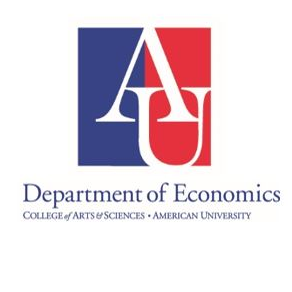
AU Economics @AU_Economics
895 Followers 482 Following The Department of Economics @AmericanU, located in the nation's capital. Home of the @AU_PGAE and the Info-Metrics Institute
Luis BQ @tradecosts
2K Followers 3K Following Trade/urban. l like working with historical data. Tweets about cities and globalization. Raised in Northern Mexico during a NAFTA boom. AP at William & Mary.
Catalina Amortegui @CataAmortegui
178 Followers 750 Following WSU ‘16; political refugee, first gen Colombian-American, proud Coug and dog parent to our KC girl! **All tweets are my own, RT does not = endorsement.**
John Trainor @ademorgan1853
32 Followers 377 Following Father, husband, caregiver, friend, provider. Loyal to those who deserve it. Expert adjacent.
Jim Marshall @JimMarshal14306
15 Followers 232 Following
Asher Maxwell @ashermaxwell1
157 Followers 2K Following Hoya. Tennessean. Chair, @GUCollegeDems. Organizing with @hoyasxlegacy. Soon: Research @JoshStein_ Previously: Press @SenWarren, Comms @JohnCooper4Nash.
Daniel Princiotta, Ph.. @dprinciotta
444 Followers 1K Following Assistant Research Scientist @JHUeducation. Education researcher, evaluator, data scientist, & policy wonk. Interests include attainment, SEL, STEM, & poverty.
ej7a6do3xku0 @bcydixycpv
2 Followers 323 Following
Laurie Casey @lauriewlms
46 Followers 273 Following
ffektiv.ai - AI Autom.. @ffektivAI
14 Followers 29 Following ✨ Empowering Higher Ed Marketing with AI https://t.co/U5a6jeGP3O
Come To Believe Found.. @ctbnetwork
79 Followers 32 Following Providing higher ed institutions with an innovative two-year college model that is accessible to students often underrepresented at selective universities.
Jay Gentry @JayGentryNAWB
27 Followers 95 Following Director, Business Development National Association of Workforce Boards (NAWB)
Min Bista @bista_min53775
3 Followers 254 Following
VOCEDplus @VOCEDplus
2K Followers 2K Following @NCVER's international tertiary education research database: vocational education and training, skills, workforce needs, social inclusion, lifelong learning
Stephen Weltsch @StephenWeltsch
91 Followers 854 Following
ali kemal afşar @facebook6748333
77 Followers 964 Following
heather bouchey @Hab11Heather
38 Followers 146 Following
Tachina @Tachina3
11 Followers 81 Following
Kirk Koennecke @ihsuperbrave
2K Followers 4K Following Proud husband, father of 5, grandfather, Buckeye, Redhawk & CEO/Superintendent of the Indian Hill Schools @IHSchools #IHPromise
Brooke Boelman @b_boelman
78 Followers 288 Following #Journalist turned #PostsecondaryEd writer. Madisonian with #Rural roots. Enjoys cooking, hiking and craft beer.
FareApprendistato @ApprenticeADAPT
2K Followers 122 Following una comunità di esperti e #giovani professionisti per il rilancio del contratto di #apprendistato
Brett Herda @HerdaBrett
484 Followers 5K Following Exploring quirks in college financing. Prev: derivatives (RBC & BAML), @NorthwesternU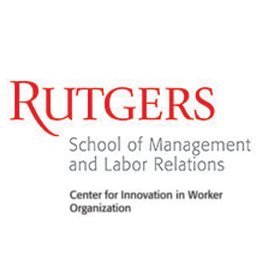
Rutgers CIWO @RutgersCIWO
704 Followers 2K Following The Center for Innovation in Worker Organization (CIWO) @RU_SMLR is working to shift the balance of power towards greater #equity in our economy and society.
Skylar Rispens @skylar_rispens
3K Followers 1K Following reporter: @State_Scoop & @EdScoop_news | @EdWriters fellow | she/her | @UMJSchool alumna | words: @mtfreepress, @missoulian, @GFTribune/@USATODAY & more |
The HEA Group @HEAGROUP
158 Followers 246 Following The HEA Group is a research and consulting agency focused on college access and success. Follow us for data driven insights on all things #highered.
Philip Ortiz • He/H.. @opahey4ortiz
436 Followers 3K Following Lucky immigrant kid. proud 2nd gen filipino | API community activist. IG: tito_ortiz_official #TeamJoe #KHive 🌊🌊 #2020BlueWave 🌊🌊 #ReadyToVote
Dr. Meagan S. Richard @MeaganSRichard
466 Followers 2K Following Scholar of equity-oriented school leadership; Assistant Professor @ODUEdLead; toddler mom; wine and cheese lover; aspiring gardener
Peter N. Knox, PhD, M.. @PNKnox
243 Followers 905 Following Research Assistant Professor @uvmvermont | 🏳️🌈 | #Montanan | Studying #rural fam-school-community partnerships, community schools, school climate/culture.
Sebern Coleman, PhD @scolemanphd
87 Followers 166 Following Dir. Educator Prep @unlvcoe, Comm Strategist, Connector. NUPE | ΚΑΨ👌🏾 | 📍Vegas but Southern-made | DillardU + UNLV — Practicality is my love language.
Andrew D. Coppens @AndrewCoppens
454 Followers 2K Following Associate Professor of Education in Learning Sciences @UofNH. Views expressed are my own.
Bryant McGill @BryantMcGill
38K Followers 42K Following Thought Leader 🇻🇦 Adopted Offspring of Howard Hughes 🧬 Technologist ✮ WSJ & USAToday BestSelling Author ✮ 10 Million Followers ✮ UN Appointed Global Champion
Oscar Diaz @DrOscar_Diaz
484 Followers 497 Following Administrative Supervisor at the Freehold Regional High School District #TheRegional https://t.co/2Y84FUa0Fn
Brock Erdahl @BrockErdahl
0 Followers 2K Following
Dr. Aisha A. Almond @DrAAlmond
5 Followers 45 Following
Campaign for Business.. @edcampaign_USA
28 Followers 185 Following The campaign aims to improve economic mobility for the next generation of learners by connecting talent with opportunity. Visit: https://t.co/cck2GZh6UV
Tsietsi @Tsietsi7036
165 Followers 2K Following
Some Guy @Brosephus_T_Rex
2 Followers 303 Following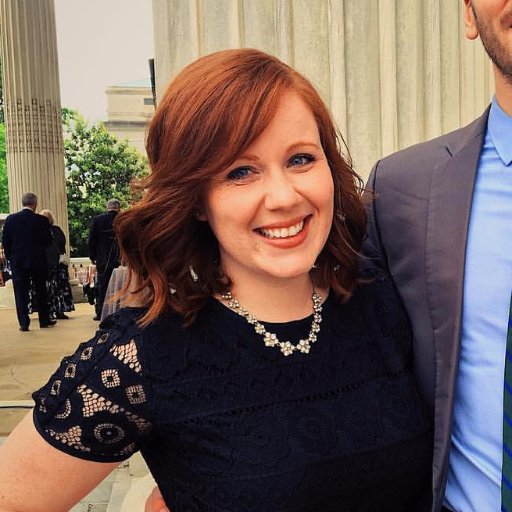
Claire Viall @claireviall
364 Followers 2K Following CA ↔️ DC, former @EdLaborCmte,@RepMarkTakano and @RepPaulTonko. @UCBerkeley and @GWtweets Alumna. Thoughts are my own.
Mehmet Kaplan, Ph.D. @kaplanbalkes
227 Followers 205 Following Lead Data Scientist @NJIT, Ph.D. in Psychometrics @RutgersU, M.S. in Statistics @RutgersU
flaming june @emilykang
2K Followers 5K Following from shallow mind to deep mind somewhere. former B-school struggler. Cat•holic. Eyes on anything glittering. Practicing pilates every day. 아메숏의 동거인이자 랜덤트위터입니다.
Felix Quayson, Ed.D.,.. @fireofavor
82 Followers 127 Following Education scientist and scholar. 2023-25 CTE-SIG Secretary at AERA #ECMCFFellows #CTE #Workforce
Braulio Colón @brauliocolon
866 Followers 94 Following USF Alum. ELON & FIU Dad. Co-Founder & Executive Director, Florida College Access Network.
Tseudo @Tseudo10
45 Followers 23 Following
Eric Hoover @erichoov
20K Followers 1K Following College access, admissions, inequality in education. Senior writer @chronicle. Believer in baseball, underdogs, long narratives. [email protected]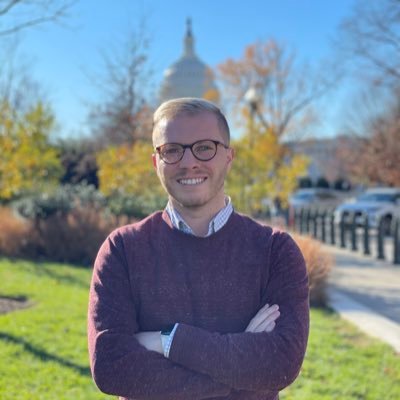
Wesley Whistle @WesleyWhistle
5K Followers 2K Following #HigherEd policy @usedgov #Team46. PhD-ing @universityofky. Former Senate staffer, think tanker, & higher ed admin. Forever Kentuckian. My tweets. He/him 🏳🌈
Sara Goldrick-Rab @saragoldrickrab
47K Followers 24K Following AUTHOR of Paying the Price 📚 FOUNDER of #RealCollege @hope4college @believestudents 💡ADJUNCT @ccpedu ✏️✏️SENIOR FELLOW @educationnw 🔬MOM of teens 🌱🐶🐈🐈⬛
Jon Boeckenstedt de l.. @JonBoeckenstedt
19K Followers 1K Following Please read link below before following. Fan of German Lagers & college access. Called an unpleasant character by some. This is a personal account.
CJ Nellum @chrisnellum
14K Followers 10K Following fairness first | exec dir @edtrustwest | my views ≠ my employer | #caedu #cahighered #caleg #cabudget #edequity
Dr. Karen Stout @drkastout
9K Followers 4K Following President & CEO @AchieveTheDream powering #comm_colleges to improve equitable outcomes for 4 million students in 45 states. President Emerita @mccc (she/her)
Travis Reindl 🏳️.. @treindl71
2K Followers 2K Following Washingtonian, South Dakota native. #LGBTQIA, retired runner, comms/policy pro, news junkie, proud Presbyterian. Fueled by caffeine. Snark my own.
Inside Higher Ed @insidehighered
242K Followers 4K Following Helping 🫵 make sense of #HigherEducation. Follow us for the latest news, opinions, jobs, and resources. Send #HigherEd news and tips via DM.
Lumina Foundation @LuminaFound
32K Followers 2K Following Lumina is a private foundation in Indianapolis committed to increasing the share of Americans with quality #highered degrees + other credentials to 60% by 2025.
Amy Ellen Duke-Benfie.. @AEDukehighered
2K Followers 1K Following Managing Dir @HigherLearnADV Alum: @clasp_dc @skillscoalition @hope4college She/her Mastodon: @[email protected]
Walter M. Kimbrough @HipHopPrez
26K Followers 630 Following Intermission; @hiphopprez on IG, Threads & SPILL
Kim Hunter Reed @KimHunterReed
5K Followers 485 Following Louisiana’s Chief Advocate for Talent Development (Commissioner of Higher Education). Committed to attainment & equity. Wife & proud volleyball mom
The Education Trust @EdTrust
99K Followers 782 Following We are committed to advancing policies & practices to dismantle the racial & economic barriers embedded in the American education system. CEO ➡️ @Denise_EdTrust
Melissa Korn @melissakorn
19K Followers 3K Following Reporter covering higher education @WSJ. I like scoops, including those made of ice cream. Definitive book on #VarsityBlues, UNACCEPTABLE, out now!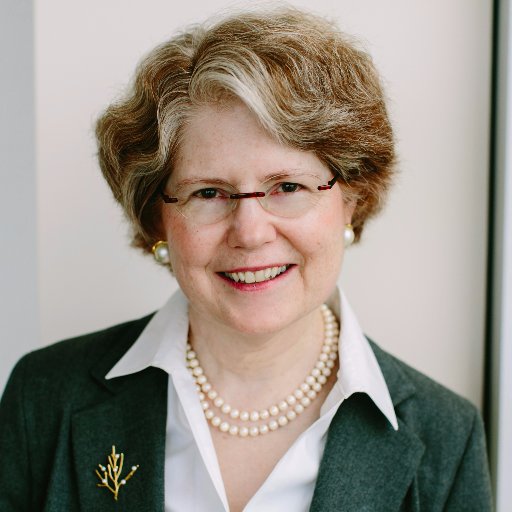
Alexandra W. Logue @LexaLogue
2K Followers 2K Following CUNY Research Prof, higher ed data proponent, author: Pathways to Reform https://t.co/1AihTzpOCY & The Psychology of Eating and Drinking https://t.co/d1WC6xt0Li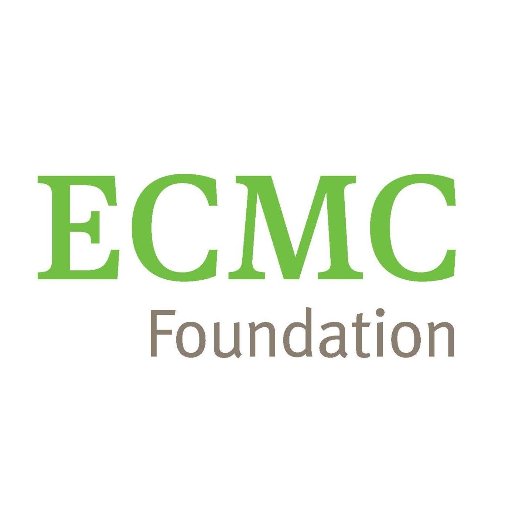
ECMC Foundation @ECMCFoundation
4K Followers 1K Following Philanthropic arm of @ecmcgroup. Our mission is to improve higher education for career success among underserved populations through evidence-based innovation.
IHEP @IHEPTweets
8K Followers 2K Following The Institute for Higher Education Policy is committed to improving access and success for all students by conducting timely research to inform public policy.
College Promise @College_Promise
5K Followers 2K Following National, non-partisan, non-profit initiative building broad public support for funding the first 2+ years of postsecondary education for hard-working learners.
Jeff Selingo @jselingo
29K Followers 3K Following NYT bestselling author. Bylines: @NYTimes @NYMag @TheAtlantic @WSJ. Advisor, @ASU. Founder, @AcademyHigherEd. Editor, Next newsletter. Co-host, @futureupodcast.
Bryce McKibben @bmckib
4K Followers 3K Following He/him. Fighting to make college affordable @hope4college. Proud alum @HELPCmteDems. Also @CCTrustees @EdWorkforceDems @WAStudents @UW @Kennedy_School. 🏳️🌈
Mike Nietzel @MikeNietzel
3K Followers 2K Following Retired University President. Psychologist. Higher Education Writer. Book Lover. Dog Guy, Jazz Fan. Cubs, Wildcats, Illini, Bears and Hawkeyes.
Divided We Fall @dividedwefall42
6K Followers 84 Following Bipartisan dialogue for the politically engaged | https://t.co/KLpCFhNQyv
Events Industry Counc.. @Events_Council
16K Followers 912 Following The Events Industry Council is a federation of more than 30 organisations in the events industry.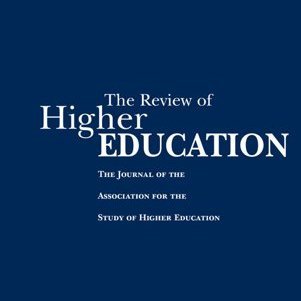
Review of Higher Educ.. @RHE_ASHE
3K Followers 60 Following RHE is the official journal of the Association for the Study of Higher Education (ASHE).
MSIDataProject @MSIDataProject
431 Followers 1K Following A data initiative to advance greater understanding of Minority-Serving Institutions and their unique contributions to postsecondary education.
Spencer Foundation @Spencer_Fdn
10K Followers 239 Following Investing in education research that cultivates learning and transforms lives.
AERA @AERA_EdResearch
46K Followers 7K Following Official account of American Educational Research Association, a national interdisciplinary research association for ~25K+ scholars who undertake #edresearch.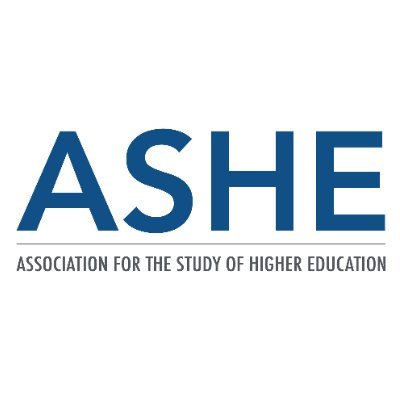
ASHE @ASHEoffice
13K Followers 1K Following The Association for the Study of Higher Education promotes collaboration among those engaged in the study of higher education.
AALS @TheAALS
6K Followers 3K Following The Association of American Law Schools represents 176 U.S. law schools with the mission of advancing excellence in legal education.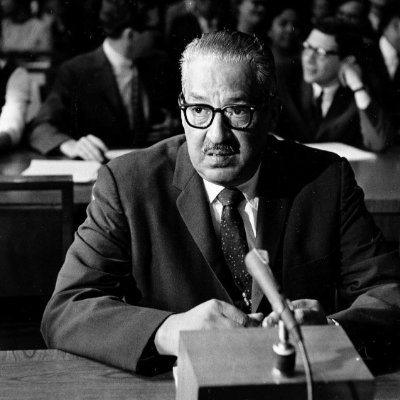
TMCF @tmcf_hbcu
13K Followers 1K Following The Thurgood Marshall College Fund (TMCF) represents nearly 300,000 students attending our 47 member-schools (publicly-supported #HBCUs). RTs ≠ endorsements.
NADOHE @NADOHE_
2K Followers 89 Following The preeminent voice for diversity officers in higher education, leading colleges/universities toward inclusive excellence through institutional transformation.
AJCU @jesuitcolleges
6K Followers 2K Following 28 Jesuit colleges and universities in North America comprise the Association of Jesuit Colleges and Universities (AJCU), based in Washington, D.C.
American Association .. @AAUP
18K Followers 2K Following We champion #academicfreedom, advance shared governance, and organize all faculty to promote economic security and quality education.
CUNY ASAP|ACE @cunyasap
3K Followers 1K Following Official account for @CUNY's Accelerated Study in Associate Programs (ASAP) and Accelerate, Complete, Engage (ACE) Program.
InsideTrack @InsideTrack
3K Followers 2K Following Empowering all #learners to achieve educational and #career goals through #coaching. Transforming lives, fostering mobility. Over 3.1M learners served.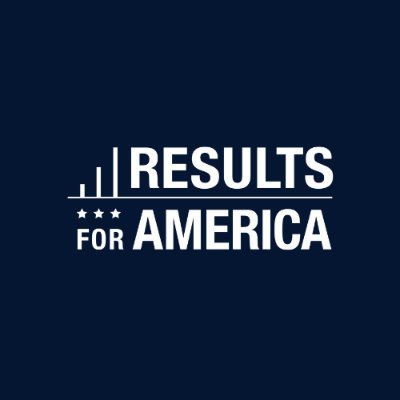
Results for America @Results4America
8K Followers 4K Following RFA is helping government leaders harness the power of evidence and data to solve the world's greatest challenges.
Institute for Educati.. @IELconnects
7K Followers 2K Following We partner with communities to prepare children, youth, adults, and families for postsecondary education and training, rewarding careers, and civic engagement.
Mott Foundation @MottFoundation
19K Followers 945 Following A private, grantmaking foundation. The Charles Stewart Mott Foundation funds in four program areas: Civil Society, Education, Environment and Flint Area.
CASE @CASEAdvance
16K Followers 10K Following Global nonprofit association dedicated to educational advancement.
AGB @AGBInsights
2K Followers 2K Following The Association of Governing Boards of Universities and Colleges (AGB) is the premier membership organization that strengthens higher education governing boards
Adrienne Lu @adriennelu
2K Followers 2K Following Reporter for @Chronicle covering politics and underrepresented students. Alumna of @PewTrusts @PhillyInquirer @TheRecordNJ @NewsObserver
AAAS @aaas
145K Followers 480 Following Updates from AAAS, the American Association for the Advancement of Science. Join us: https://t.co/iUvdZveVpd
IFJ @IFJGlobal
70K Followers 6K Following The IFJ is the global voice of journalists and represents 600,000 journalists (in 190 affiliates) in 146 countries. IFJ General Secretary : @abellanger49
Anthony Brooks @anthonygbrooks
4K Followers 759 Following NPR veteran & senior political reporter, WBUR, Boston's NPR News station. Passionate about true stories and Italian olive oil. Sono in ritardo
Gary Orfield @orfieldtweet
2K Followers 70 Following I am a political scientist, a professor and co-director of the Civil Rights Project at UCLA check my Facebook. Google scholar or my books on Amazon for info.
Mario Sanguinet, M.A. @medsan14
99 Followers 322 Following Someone once called me a Renaissance man, I try to live up to that every day.
50CAN @FiftyCAN
25K Followers 8K Following We're a team of local leaders and advocates working toward a high-quality education for all kids, regardless of their address.
MindMax @MindMaxLLC
98 Followers 301 Following MindMax is your partner to increase enrollments. Our marketing and enrollment services are unbundled, technology-enabled and 100% higher ed.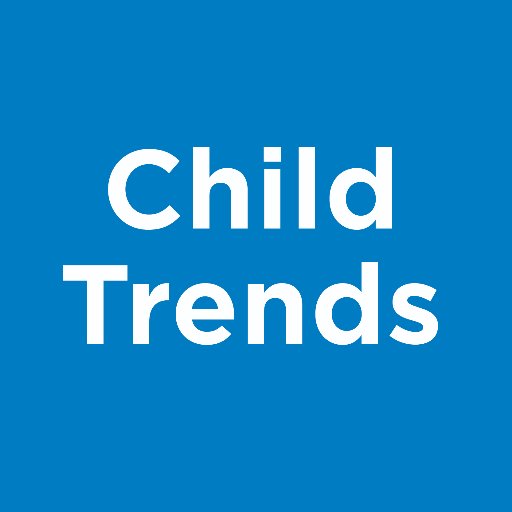
Child Trends @ChildTrends
29K Followers 571 Following Nonpartisan research to improve children’s lives. Sign up for our newsletter here: https://t.co/XVMGHGU7qp
Operation HOPE @OperationHOPE
12K Followers 4K Following The global leader of financial dignity & economic empowerment programs for low to moderate-income youth, individuals & families in underserved communities.
Root Cause @RootCause
16K Followers 3K Following Root Cause is a nonprofit consulting team that helps drive effective and enduring social change. | SUBSCRIBE TO OUR NEWSLETTER ➡️ https://t.co/pe7aqK9f1p
FLSA Today @FlsaToday
3K Followers 960 Following Tweeting about FLSA and EEOC issues today and important issues for tomorrow.
Futuro Health @futuro_health
457 Followers 550 Following Futuro Health makes education journeys into allied health careers possible. #futureofcare #futureofwork
Achievement Factors @achievefactllc
30 Followers 141 Following Dedicated to promoting high achievement among students who need it the most & developing alternate methods for assessing student potential. Founder: Arnold Kee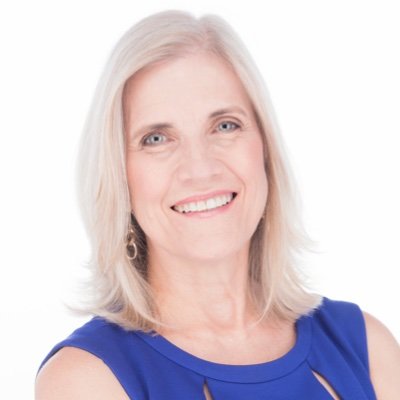
Beth Frerking @BethFrerking
3K Followers 3K Following Editor-in-Chief @educationweek. Alum @DallasNews @TheNLJ @politico @denverpost @thedailytexan. @UTJSchool grad. Spouse @woodwriter. Mom, stepmom, beagle mom.
Marjorie Valbrun @EditorMarjorie
427 Followers 585 Following Managing Editor @insidehighered Steward of words and turns of phrases. Wielder of scalpel or cleaver as editing tools. Daughter of beloved Haiti.
Guardian Education @GuardianEdu
290K Followers 123 Following Education news and comment from the @guardian
Cory Turner @NPRCoryTurner
12K Followers 2K Following @NPR education correspondent [email protected]
Bill Schackner @Bschackner
2K Followers 459 Following Higher ed writer in Pittsburgh. News/weather nerd. Part of 2019 Pulitzer Prize-winning team. Weak speller. Chief annoyer of wife, daughter. My account, my views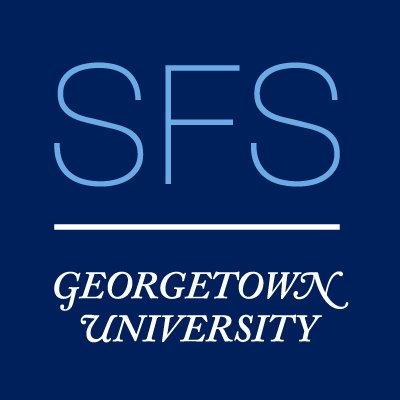
Georgetown SFS @georgetownsfs
17K Followers 735 Following Georgetown University's Walsh School of Foreign Service, founded in 1919, is a premier school of international affairs.
NISOD @NISOD
4K Followers 5K Following A membership organization committed to promoting and celebrating excellence at community and technical colleges.
NYC Mayor's Office of.. @NYC_MOYE
118 Followers 89 Following The Mayor's Office of Youth Employment facilitates a network of youth employment services through partnerships with NYC agencies, employers and stakeholders.
Ascendium Education G.. @AscendiumEd
248 Followers 16 Following We’re a nonprofit that believes in the power of education and workforce training to elevate opportunity.
Ascendium's Education.. @AscendiumEP
570 Followers 197 Following We’re committed to elevating opportunities for learners from low-income backgrounds so they can achieve their goals.
Higher Ed, Not Debt @HigherEdNotDebt
10K Followers 762 Following We're working for quality and affordable higher ed—without debt. Join the movement! RTs≠endorsements.
Trellis @Trellis_Company
888 Followers 1K Following Nonprofit. Mission-driven to connect people to education-to-employment pathways that transform their lives. Follows & RTs ≠ endorsement.
NYEC @TheNYEC
769 Followers 714 Following NYEC is a national nonprofit that improves the effectiveness of organizations that connect young adults with education and employment. RTs are not endorsements.
American Consortium f.. @access2equityed
10K Followers 8K Following Advocating for equity & opportunity in every school. Publisher of the Equity & Access journal. Join for free at https://t.co/bZC6nsNmCg! #equityawards #edequity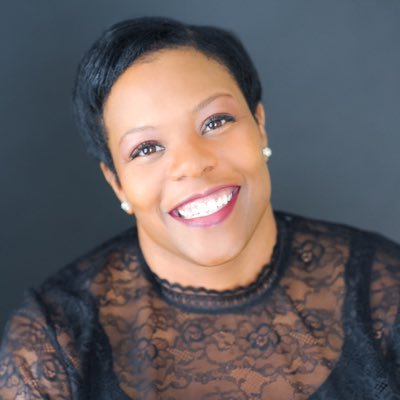
Kaya Henderson @HendersonKaya
19K Followers 2K Following Educator, Magical Black Girl, Fighter For Justice, Dancing Queen & Travel Fiend. CEO of Reconstruction, Co-host @PodSaveThePpl, Tweets are my own
Jessica Bryant @bryantjessicaa
73 Followers 173 Following Data Reporter at @BestColleges. Previously at @SFBJNews🧡📖🧡
Today is #WorldBookDay! Let's celebrate the joy of reading and the power of learning. In a world where knowledge is key, let's keep turning the pages and unlocking new insights together.
Opinion | Is AI Finally a Way to Reduce Higher Ed Costs? AI could free up faculty time to focus on the teaching and relationship-building that matter most, José Antonio Bowen and C. Edward Watson write. #HigherEd bit.ly/4aO3wFT
A child’s education extends far beyond the classroom. Authentic family & community engagement w/ schools is crucial for student’s growth & development. Here, we provide strategies for educators to foster positive relationships: edtru.st/3TSGUwE #PlantingSEADs
Community colleges are well positioned to take a leading role in transitioning the U.S. economy to green technologies to address climate change. They are spread around the country, in rural, suburban, and urban areas... ccrc.tc.columbia.edu/easyblog/commu… @FoundationCCC @ResearchEdDC
Long-awaited @theNASEM report sheds light on the need for better pre-K curricula, writes @ALoewenberg @NewAmericaEd. newamerica.org/education-poli… via @NewAmerica
This report should be distributed, annually, to every family with a child going to college or university! “Do not worry too much about where you (your child) go(s) to school: institutional brand adds value, but not nearly as much as most people believe.”
Enhancing counseling and other student services could make all the difference in providing students with a clearer roadmap from school to economic independence. Read the rest of our recommendations for administrators and policymakers: bit.ly/3pTk2jn
“It’s not an equitable system when we rely on [community college] students to come in with knowledge of this hidden curriculum on how to transfer instead of holding institutions responsible for creating clear pathways and adequate advising along the way.” the74million.org/article/new-da…
Is college worth it? Jamie Merisotis and @GeorgetownCEW's Anthony Carnevale answer this question and more on Lumina's recent podcast episode. Hear about the enduring value of college learning, college affordability, the importance of storytelling & more: luminafoundation.org/news-and-views…
@GeorgetownCEW Congratulations to AU Alumni Dr. Jeff Strohl on becoming the new director of the Center on Education and the Workforce!
It's college decision season and millions of students are debating what school is the best choice for them. Where can you get the most bang for your buck? Read our @wealth story to find out... bloomberg.com/graphics/2024-…
Trying to decide among colleges? Here's a really cool tool to explore ROI on different colleges/degrees from @GeorgetownCEW. Check out how different colleges compare on NPV (net present value) at 15 years. Hint: higher is better. cew.georgetown.edu/cew-reports/ro…
Some colleges, companies are working to broaden access to internships, while diversifying the talent pipeline for employers. wapo.st/4acsX3J
According to Georgetown University, people with only an associate’s degree earn between $1.4 million and $2.9 million over their working life, while Bachelor’s degree holders earn between $1.9 million and $4.1 million during their careers. “More education doesn’t always get you…
College internships matter more than ever — but not everyone can get one. Well researched.Anthony Carnevale of @GeorgetownCEW says: “Internships are a prized commodity.” wapo.st/3TIuA28
#NewTitle via @GeorgetownCEW Small towns, big opportunities: many workers in rural areas have good jobs, but these areas need greater investment in education, training, and career counselling - hdl.voced.edu.au/10707/675019
A new report from @GeorgetownCEW confronts the popular narrative that rural America has been “left behind” and finds that working adults in rural America are almost as likely as working adults in urban America to have a good job. Read it here: cew.georgetown.edu/cew-reports/ru…
By 2031, est. 72% of jobs will require postsecondary education or training, according to a @GeorgetownCEW study. We need to provide WA with pathways, financial aid, & support to prepare for the changing job landscape: bit.ly/GU-Projections… #Pathto70 #WAEdu
If you want to make any sense about majors and ROI, see the research by the @GeorgetownCEW
This is why our society is so boring and headed in the wrong direction. Too many majors pay so little when you graduate. Would love to see this flipped—liberal arts majors making more than finance folks. Not to mention teachers, nurses, first responders. cnbc.com/2024/03/24/bes…
@GeorgetownCEW This is a travesty and it must change if we are to be economically competitive and personally prosperous.
@ddbragg @JoyceFdn @GeorgetownCEW @braggassociates @occrl @insidehighered @edILLINOIS @ILcctrustees @CommunityCCRC Looking forward to this in-depth conversation!
